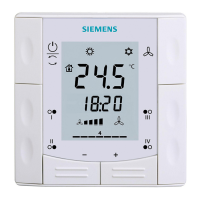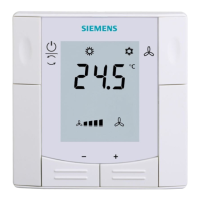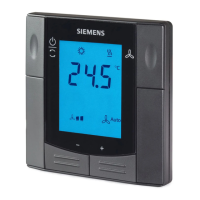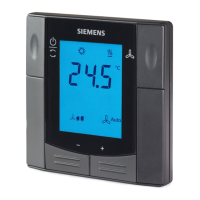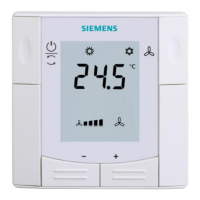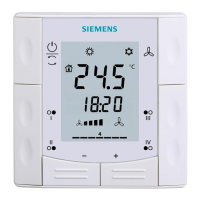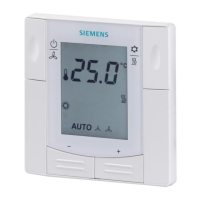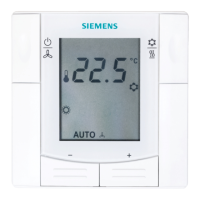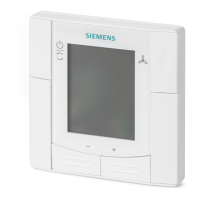
Do you have a question about the Siemens RDF302 and is the answer not in the manual?
| Brand | Siemens |
|---|---|
| Model | RDF302 |
| Category | Thermostat |
| Language | English |
Provides fundamental information and guidelines for using the Siemens thermostat.
Tracks changes and updates made to the document across different editions.
Lists related documents and specifications for further information.
Guidelines for document use, including copyright, quality assurance, and reader requests.
Identifies the intended audience and necessary knowledge for using the document.
Defines key terms and abbreviations used throughout the documentation.
Details the different models of thermostats available, including stock numbers and specifications.
Provides information on product numbers and designations for ordering.
A brief overview of the core functionalities and applications supported by the thermostats.
Details on integrating thermostats with Modbus communication protocol.
Lists compatible sensors and actuators for use with the thermostats.
Information on optional mounting kits and spacers for installation.
How thermostats manage room temperature, including sensor inputs and control outputs.
Describes Comfort, Economy, and Protection modes and how to influence them.
Details on setting and adjusting temperature setpoints, including limitations.
Lists the supported applications that can be configured via DIP switches or Modbus.
Explains features like heating/cooling changeover, purge function, and floor heating.
Overview of available control sequences for different applications and parameter P01.
Details on available control output signals for 2-position and 3-position control.
Configuration and operation of fan speed control, including modes and minimum on-time.
Configuration options for inputs X1/X2 for sensors and switches.
Procedures for handling temperature out of range and fault information.
Settings for Modbus RTU communication: device address, baud rate, and parity.
Overview and description of Modbus communication objects for thermostat data exchange.
Adjusting control parameters via HMI or Modbus for optimal performance, including Service and Expert levels.
Instructions for physically installing the thermostat, including mounting and wiring considerations.
Procedures for initial setup, application selection, and parameter configuration.
Guide to using the thermostat's features, including button functions and display indicators.
Information regarding the environmentally responsible disposal of the electronic device.
Overview of terminal connections for power, outputs, sensors, and communication interfaces.
Wiring schematics illustrating different application scenarios and their connections.
Description of the thermostat's physical construction, consisting of front panel and mounting base.
Detailed physical dimensions of the thermostat in millimeters, including front and side views.
